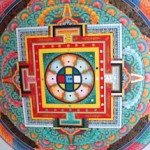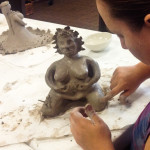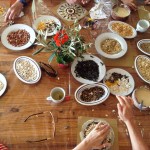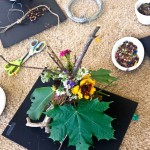Meditative Painting & Sketching
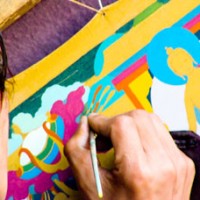
In the old days, a painter was not only a person who paints. Finding the different materials needed in order to make the desired masterpieces was an integral part of the work that required skill and expertise. The materials used both for the canvas and for making the colors could require searching and preparation. Nowadays we can simply go to the local art-store and there find a variety of ready-made colors and canvases. While this makes life more comfortable, much of the process and of the depth in the result is gone.
Going on an adventure to find the appropriate materials, making the correct mixes to create our palette of colors, can be an expanding experience through which we can connect and learn.
Colors and Materials
Stones, gems, spices, flowers and different parts of the earth (such as clay) are only some of the materials used to make natural colors.
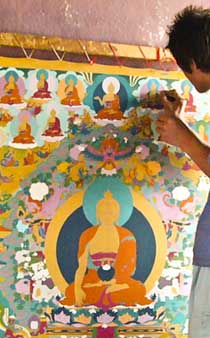
Understanding the different qualities of these materials helps us connect to the colors we use from a deeper level. We realize through experience that when we see a color it always comes together with texture. The color red for example can be thought of abstractedly, we can meditate on it, feel how it affects us etc., but in the manifested world – where we express our creativity, a color is never independent of materials and this means a texture.
An oil color painting will be different then a water color painting as we indirectly experience the oil/water. Similarly, a color made from a crushed blue stone will have different texture and characteristics from a color made from petals of a flowers.
This relationship between color and texture is far from being only an interesting theoretical concept.
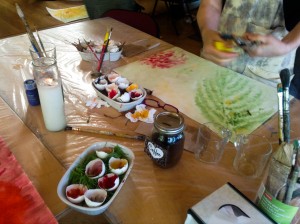 Letting colors and shapes express themselves
Letting colors and shapes express themselves
Rudolf Steiner, the father of Anthroposophical Painting, gave great importance to the use of natural materials and recommended working with water base colors and not with oil colors. Furthermore he explained in depth how different colors have different “needs” and how they should be applied accordingly. Learning the basic qualities of the main colors we can understand what “they” want and how to use them in alignment with this way of thought.
For example the color Red likes to be in the center; if the color Red was a person it would have been a very sociable and loud person that likes to be in the center of attention. Trying to make this color express something shy or introverted is an imposition, since what the red color “wants” is to make noise and be noticed. Similarly, different shapes too have their individual “desires”.
Letting the colors and shapes “express themselves” without disturbing them is something to be learned and practiced.
If we attempt to be authentic and pure in our expressing creativity perhaps we need to be respectful enough to really “get to know” the colors and use them as they wish to be used.
 Sources of Inspiration in our Meditative Art process
Sources of Inspiration in our Meditative Art process
As we paint or sketch it is important to have a positive inspiration before our eyes. This can be something that is actually in front of us, or an inspiring concept, word or thought. For example painting outdoors in nature, in front of a waterfall or a beautiful landscape opens not only our lungs but also our heart. We can dive into this divine beauty and let it work its magic on us. We can also take a word or concept that is inspiring for us and work with it. For example we can take “surrender” or “divinity” as our themes of inspiration and try to express these in our art.
In both of these ways of work we are letting our creativity support us spiritually and widen our practice.
Traditional Meditative Painting & Sketching
Mandals, Yantra, Aboriginal Sketching, Tibetan paintings, Chinese and Japanese calligraphy are a few examples of traditional Meditative Art practices. In India, for example, Mandals and Yantras have an important and respectful place in this field. These arts are deep and wide, yet this is not the place to go into detailed explanation. In general, these practices have a direct spiritual affects on the artist, and traditionally the practiced was taught by a personal spiritual master. Today many people enjoy experimentally working with these and other classical expressions of Meditative Art in alternative ways and mixed with modern concepts.
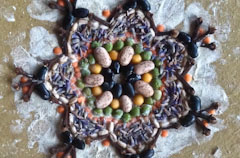
Meditation & Art Retreats
As we are live at the heart of a magical forest and all our workshops take place at especially inspiring locations, we work outdoors as well as indoors. Meditating, practicing yoga and art, surrounded by endless natural beauty, listening to the flow of the waterfall, the sound of the birds, and the wind blowing through the trees, we can dive into the source of creativity & into this divine dance.

